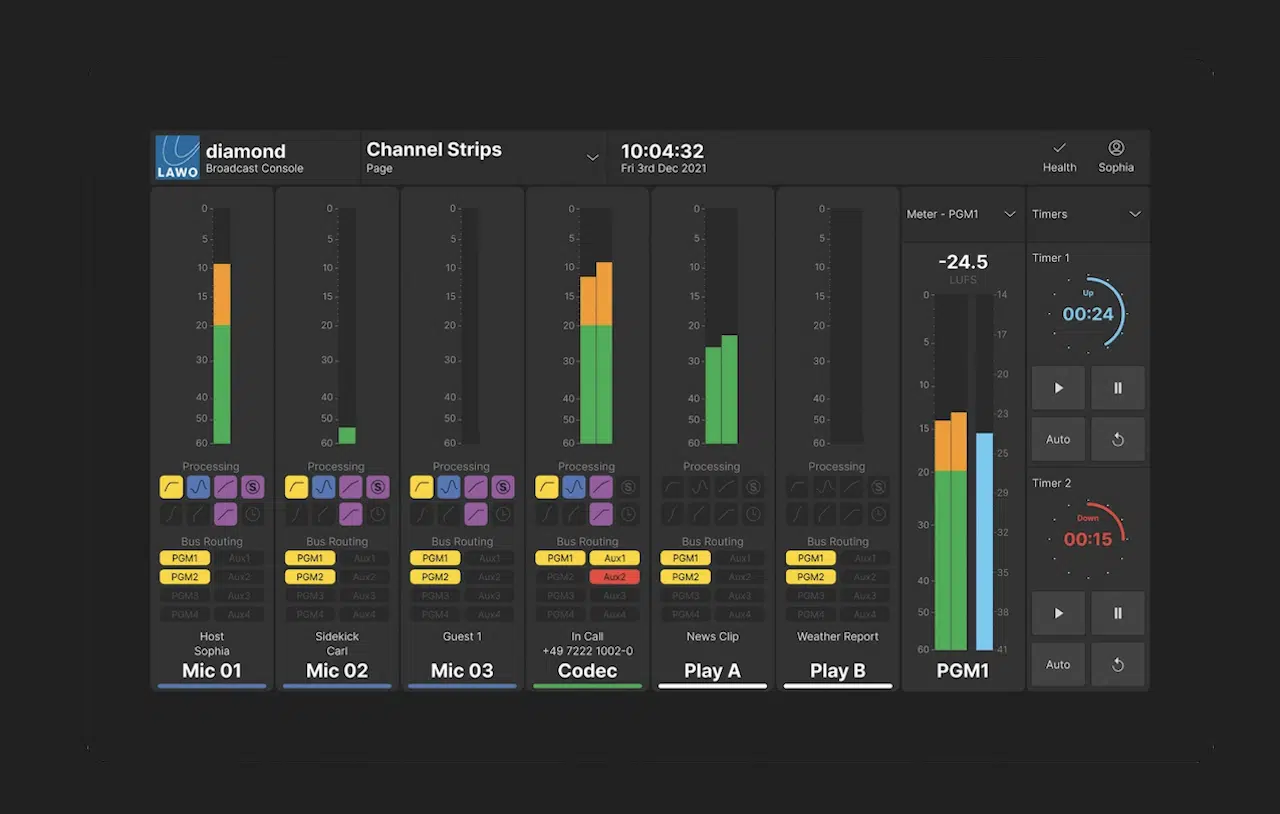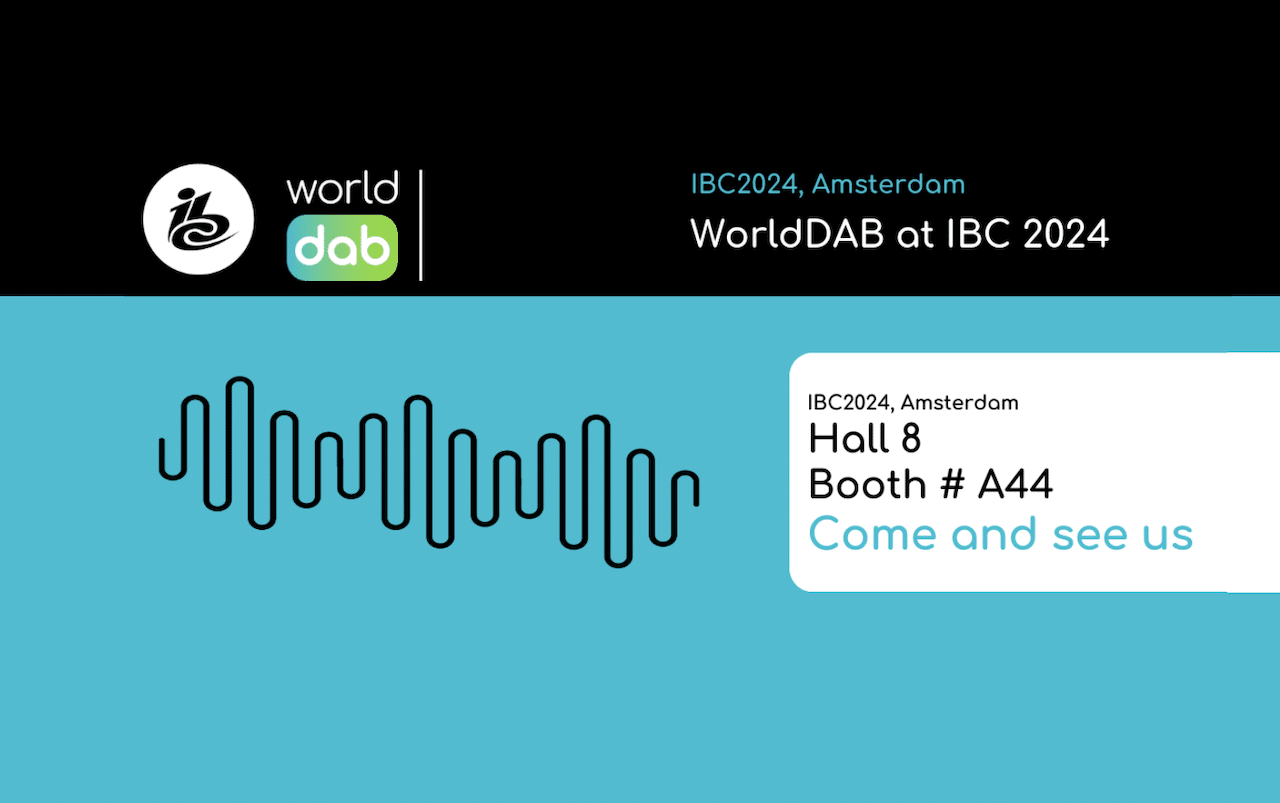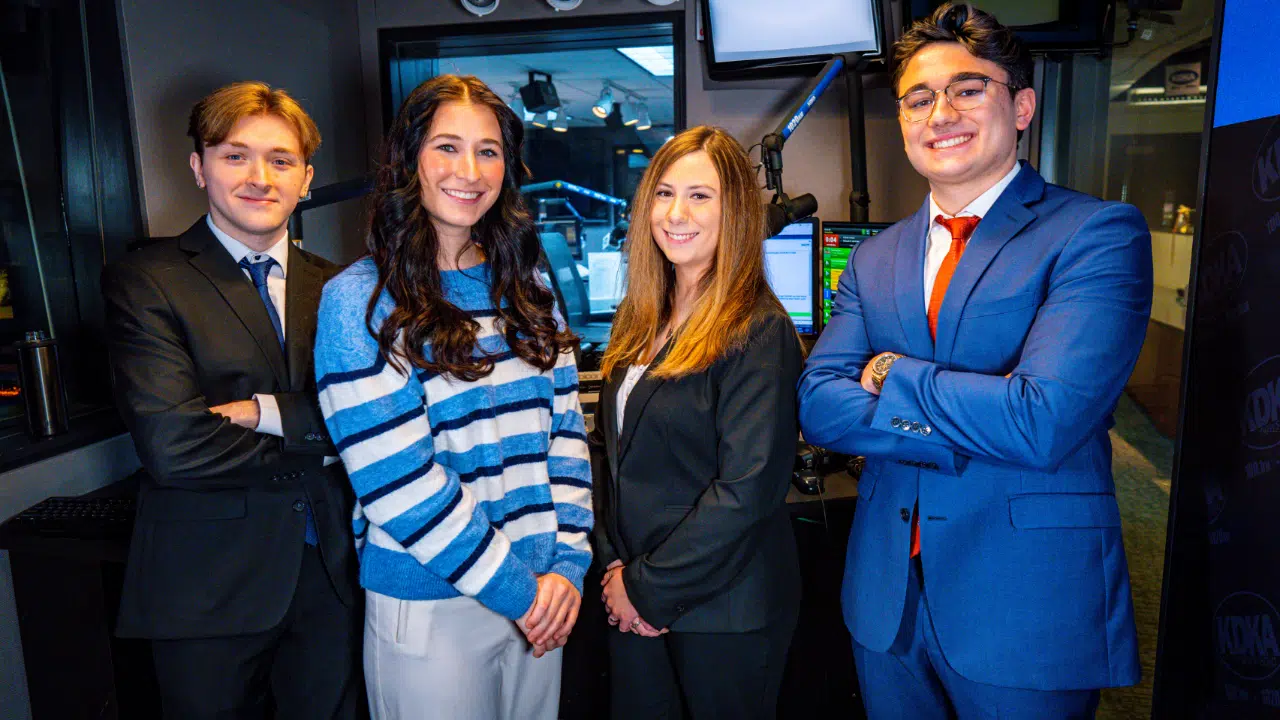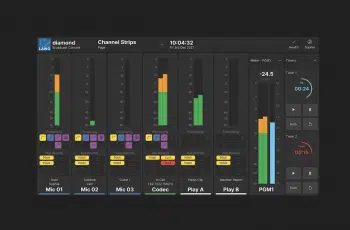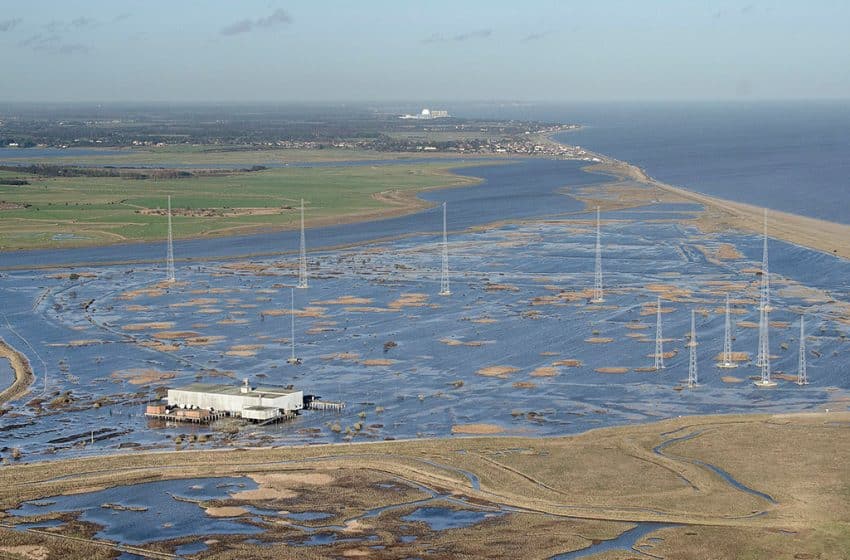
NORWICH, England — Not for the first time, Radio Caroline is a station enjoying bucking the trend. While the rest of the radio industry is scaling down AM operations, or even ceasing them altogether, the United Kingdom’s first offshore “pirate” radio station is investing in new facilities and increasing the output power of its 648 kHz AM broadcasts.

After more than 25 years of unlicensed broadcasting from the international waters of the North Sea between the British and Dutch coasts, starting Easter 1964, Radio Caroline finally stopped its offshore operations in November 1990.
The former deep-sea fishing trawler, the “MV Ross Revenge,” which was the station’s home at the time, ran aground on the treacherous Goodwin Sands in November 1991. Salvaged and repaired, it is now anchored on the River Blackwater near the village of Bradwell in Essex. The ship regularly provides studio facilities for Radio Caroline and its sister station “Radio Caroline North,” which broadcasts one weekend a month from the transmitters of Manx Radio (1386 kHz) located on the Isle of Man, in the middle of the Irish Sea between Dublin and Liverpool.
DAB transmissions
When Radio Caroline stopped its offshore AM transmissions, few would have believed that the station would still be thriving some 30 years later. After a period of temporary low-power broadcasting from various U.K. locations, satellite operations and increasing use of web streaming, the station started DAB transmissions in 2015. It was one of the earliest contributing stations to the U.K.’s experiments in small-scale digital radio, and its programming continues to reach various cities, including Birmingham, Brighton, Cambridge, London and Norwich.
Although these alternative delivery platforms kept the station in the public eye, its operators and supporters were always keen to see the station return to its AM broadcasting roots, lobbying politicians and regulators for a solution. Fortunately, as other use of AM radio broadcasting had begun to decline, Ofcom, as the U.K. broadcast radio regulator, was keen to make alternative use of such resources and re-allocated various frequencies for use by community radio services.
648 kHz’s secret history
Because of international agreements and levels of incoming interference, some of these frequencies offered only limited coverage potential. However, one in particular, namely 648 kHz, had an illustrious history of high-power international broadcasting and thus the potential to provide wider-area AM coverage. The BBC previously used this frequency for many years to deliver its European BBC World Service transmissions.
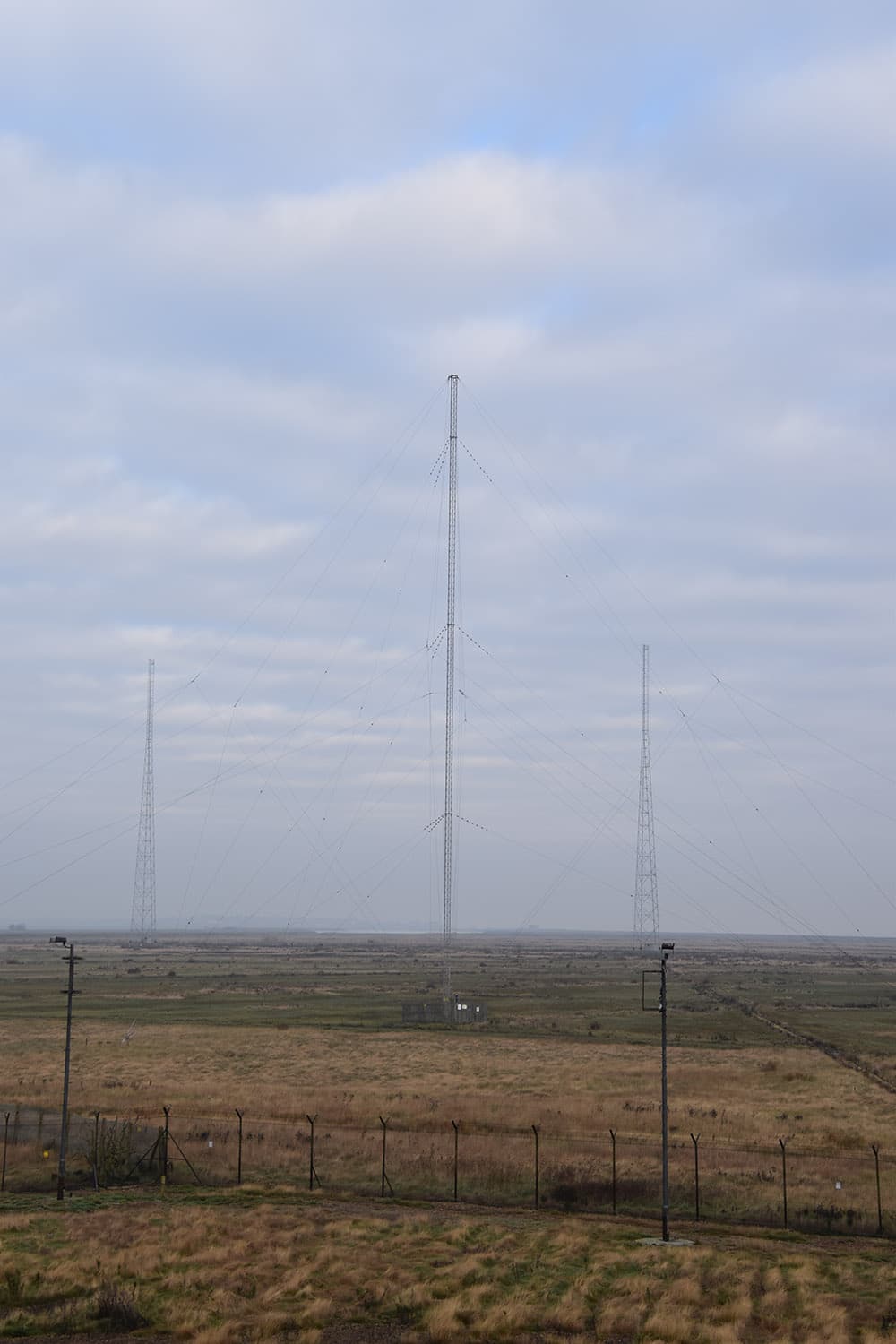
Being toward the lower end of the medium-wave band, and consequently having a longer wavelength, results in 648 kHz having robust long-distance propagation characteristics. Therefore, it can deliver effective distant reception using relatively low transmission powers. This is fortunate for Radio Caroline because, by comparison with the previous BBC transmissions on this frequency, its licensed power output is considerably lower.
Between September 1982 and March 2011, the BBC broadcast to northern Europe from the northernmost tip of Orford Ness, a 16 kilometer-long spit of land, accessible only by boat and located in East Anglia just a few hundred meters off the Suffolk Coast near Ipswich. The public service broadcaster acquired buildings and land previously used by a formerly top-secret “over-the-horizon” radar system built there in the late 1960s.
Known by the code name “Cobra Mist,” this experimental Anglo-American missile and satellite tracking base had plenty of space for multiple large antenna arrays and aircraft hangar-sized rooms suitable for accommodating transmitters and the various ancillary equipment needed for high-power international broadcasting. BBC transmissions operated on 648 kHz and 1296 kHz, at power levels of up to 500 kW. The largest transmitter there was an AEG-Telefunken S4006, installed in 1982, which had a maximum output power of no less than 600 kW.
Renewed popularity
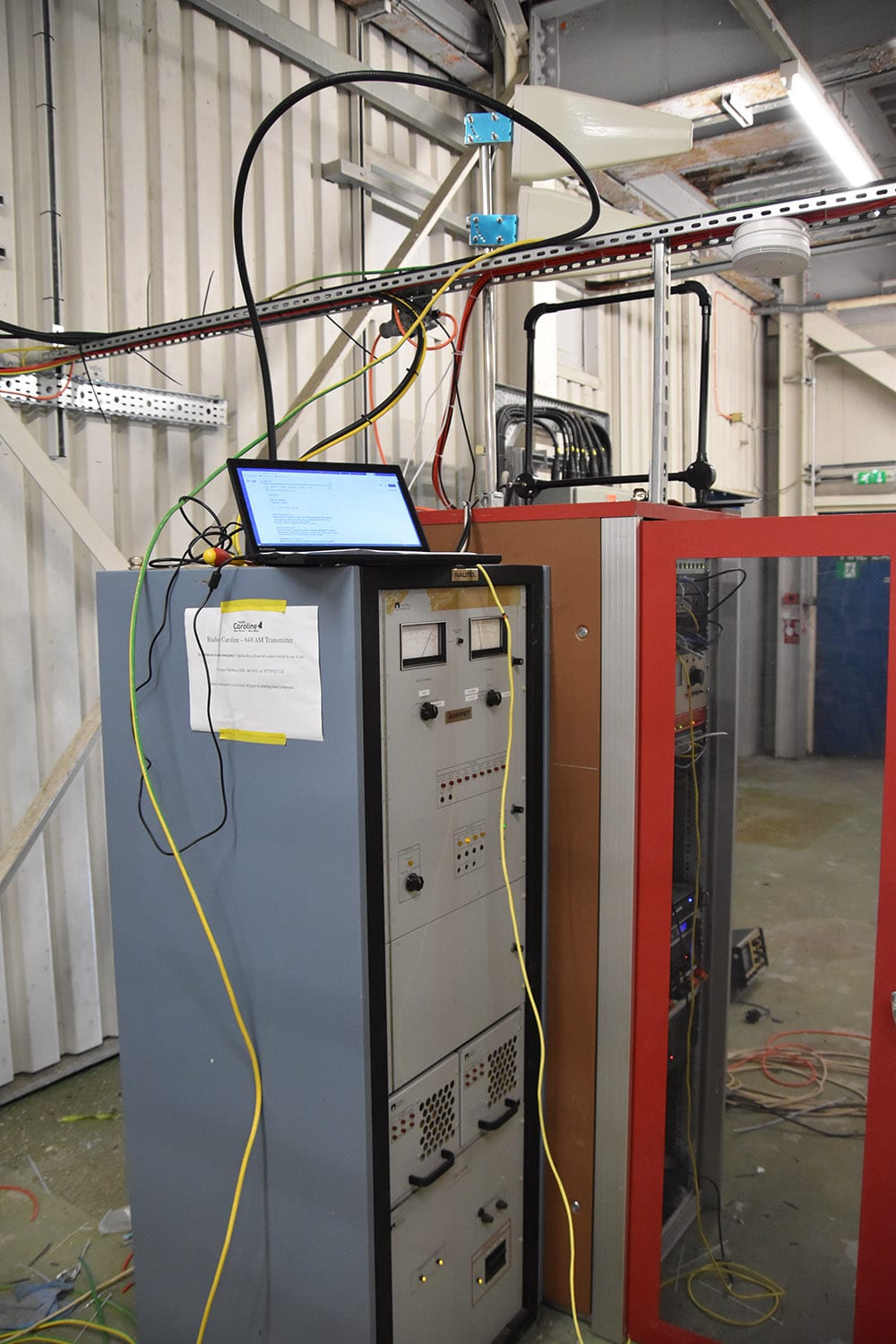
Today, Radio Caroline is Cobra Mist’s sole broadcaster — it moved to the site in 2017 when Ofcom first awarded it the 648 kHz license. The station intended to build its own new transmission facilities elsewhere in East Anglia, but as station engineer Alan Beech put it, “the opportunity to use an existing professional site was simply too good to miss.” Using the site’s 60-meter-tall omni-directional guyed antenna, Radio Caroline now enjoys renewed popularity serving much of southeast England, also reaching into nearby Belgium, the Netherlands and France.
Until late November 2021, the station used a Nautel ND2.5 Ampfet 2.5 kW solid-state transmitter for its licensed radiated output power of 1.0 kW e.m.r.p. Although reliable, this transmitter was not powerful enough to deliver the increased licensed output power of 4.0 kW e.m.r.p., so a larger alternative was required. As station manager Peter Moore told RedTech, “High power AM transmitters are not easy to come by these days, but we were lucky enough to find one available for purchase near the Dutch-German border.”
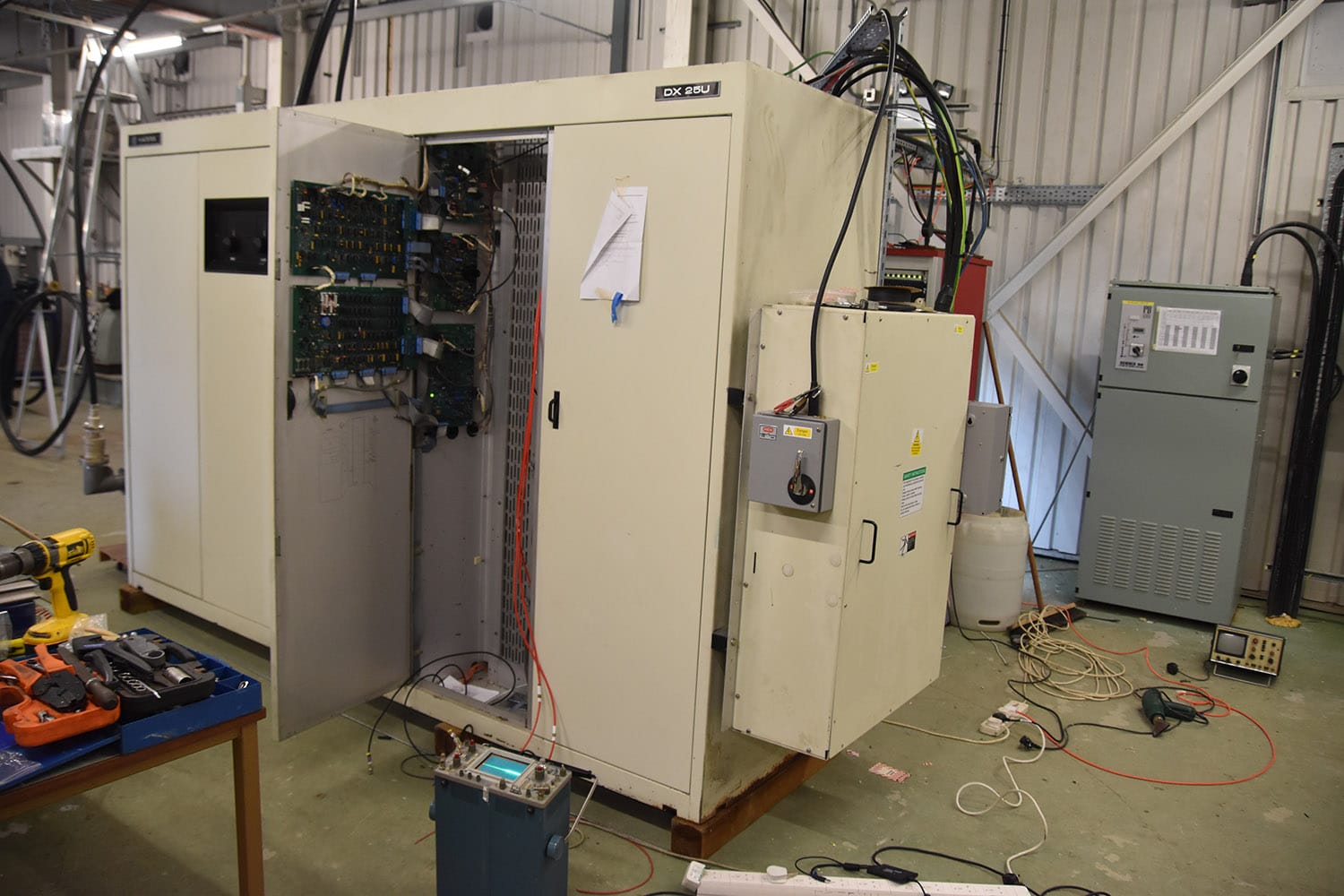
The replacement Radio Caroline transmitter, a Harris DX25U, previously operated at the now-demolished, Heinenoord transmitter site near Rotterdam in the Netherlands, broadcasting the programs of “Arrow Classic Rock” between 1998 and 2003 on 828 kHz. Out of use for many years, after shipping to the U.K. early in 2021, this transmitter required a considerable amount of costly, labor-intensive refurbishment and alterations to its output stages to make it suitable for use on the new operating frequency.
After soak-testing off-site in rural Essex, the transmitter was moved by road and then taken across to Orford Ness by landing craft for installation adjacent to the existing Nautel transmitter at the Cobra Mist facility, which is now a locally-owned private business concern.
The new transmitter was first put on air from Orfordness (the transmitter site’s name is spelled differently to the location) at 16:10 GMT on Wednesday, Nov. 24. It was commissioned by Ofcom engineers the following day, passing all tests with flying colors. Radiated power output was increased by 6dB to the new licensed maximum of 4 kW e.m.r.p. (omnidirectional), with the previously existing Nautel transmitter remaining on-site as an emergency backup.
The future
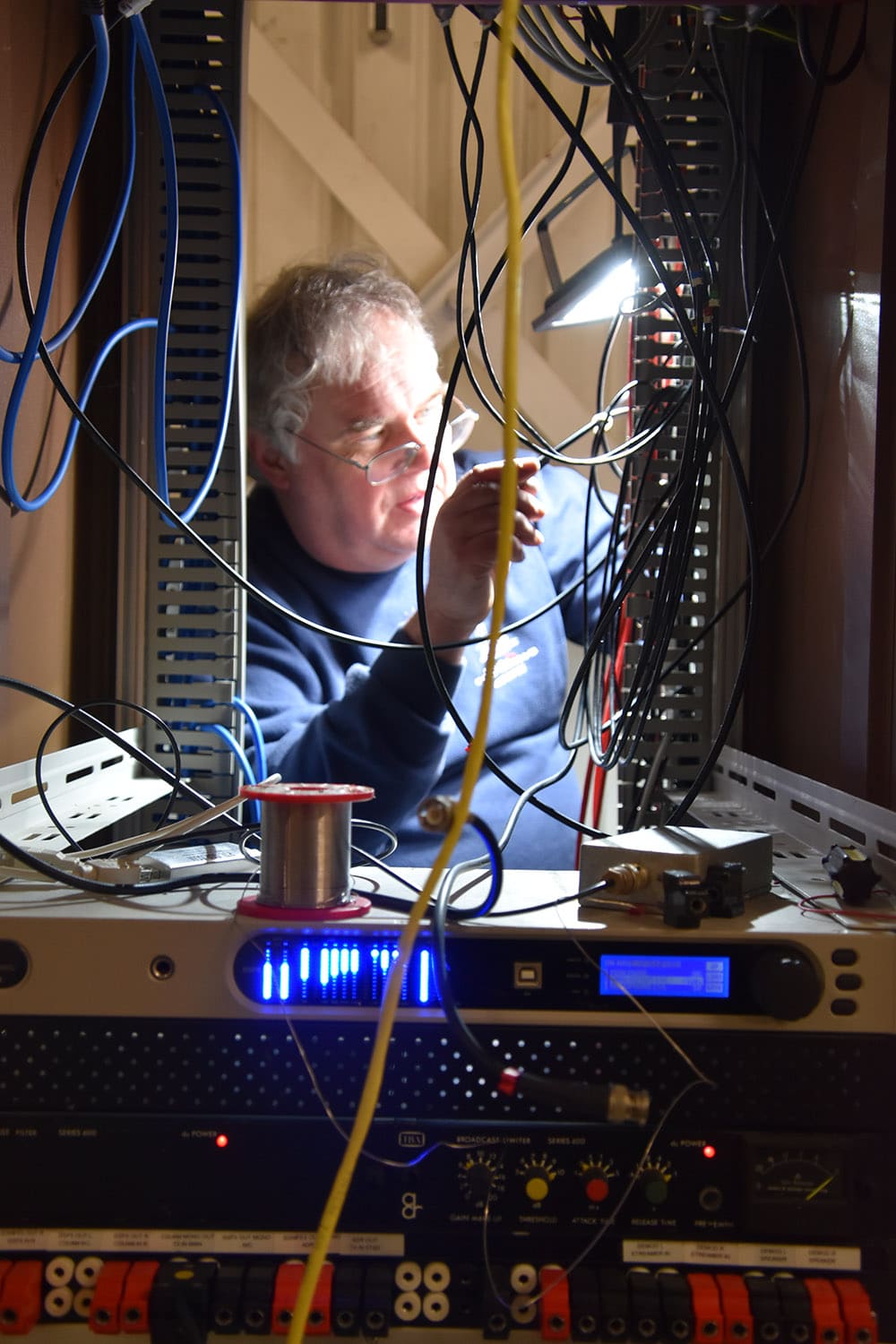
When Radio Caroline first began using the Orfordness transmitter site in late 2017, station manager Moore considered it something of a gamble, “We had no real idea of how popular AM might still be back then, and we were cautious about over-investing in a project that might not be particularly successful.” Now, however, the station has a further four years of successful AM broadcasting to look back on. “Our broadcasts on 648 kHz continue to become more popular month-on-month,” Moore told RedTech, “we’re getting increasing listener interaction, and although our DAB and online services are also popular, we’ve absolutely no intention of leaving AM again for the foreseeable future.”
Indeed, as well as investing in its new larger transmitter, the station is making other improvements at Orfordness, including a new secondary backup 4G audio link and additional remote control and switching facilities. These are essential at such a secure and remote site.
Now that Radio Caroline has completed its AM transmission system upgrades, Moore expects more attention toward the further restoration of its radio ship, the MV Ross Revenge. The station recently became a registered charity, and the vessel is now on the U.K.’s National Register of Historic Vessels. The ultimate aim is to get the ship moving under its own power once more and perhaps tour it around the U.K. coast.
Dr. Lawrie Hallett teaches radio and journalism at the University of Bedfordshire. He writes about radio from Norwich in the United Kingdom and, in the interests of full disclosure, was once a Radio Caroline presenter.



